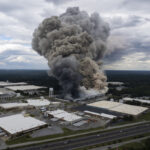New Texas poll results released this week by the National Campaign To Stop Red Light Running shows 65 percent of registered voters want to allow Texas cities to use red light cameras to crack down on drivers who disregard traffic signals.
Two bills currently before the Texas State Senate, and supported by the Texas ACLU, would prohibit the use of red light cameras.
The random sample poll of 806 Texans was conducted over a two-day period last week by Zogby International.
While a majority in virtually every sub-group supported the use of cameras at problem intersections, support was strongest among:
* males (72 percent);
* voters ages 50 and older (80 percent);
* members of the armed forces (73 percent);
* residents of small cities (79 percent) and the suburbs (69 percent);
* voters earning $75,000 and above per year (75 percent);
* political moderates (76 percent) and conservatives (68 percent).
“This poll reinforces the strong public support for red light camera
enforcement in Texas,” said Dallas City Councilwoman Sandy Greyson. “Polls in other areas with two-thirds support have actually increased to 75 percent after photo enforcement programs were established.”
Greyson’s car was struck by a red light runner in the Dallas area in 2003. Her car was totaled and she has fully recovered from her injuries. Greyson had strongly advocated for red light cameras before being involved in the crash, and reportedly remains active in the effort to reduce red light running.
Earlier this session, the Texas House of Representatives approved two
pieces of legislation that would prohibit any Texas municipalities with a red light running problem from using photo enforcement systems, despite the 20 percent reduction in violations that the City of Garland’s red light camera program has produced since 2003.
Several Texas cities have expressed an interest in using the technology, but are reportedly worried that the legislature will ban their ability to use the technology.
“The Texas legislators who don’t seem to think that red light running is a serious local traffic safety problem obviously do not speak for the majority of Texans who are tired of seeing the senseless carnage on their streets,” stated Dottie Hind, a Dallas resident and red light running survivor advocate who has testified before the Texas House of Representatives on this issue. “It is vitally important that Texans let their legislators, especially those in the State Senate, know that they want their cities to continue to have the option of using this lifesaving technology.”
Red light cameras use sensor technology embedded in the pavement and cameras mounted at the approaches to intersections to photograph the rear of vehicles that enter an intersection after the light turns red. The red light cameras in use in Garland do not continuously monitor intersections and drivers are not identified by the photographs. Once a police officer has reviewed the photographs, a civil violation is sent by mail to the registered owner of the vehicle.
More than 110 U.S. cities and towns in 20 states and the District of Columbia now use red light cameras to enforce traffic signal compliance and reduce red light running violations.
In April, the Governor of Washington signed legislation that will allow for statewide expansion of red light cameras and similar legislation is underway in Connecticut, Florida, Illinois, Rhode Island and South Carolina.
Past polling conducted by the National Campaign to Stop Red Light Running in 2002 found 83 percent national support for red light cameras in cities with a red light running problem and a 2002 national driver survey conducted by the National Highway Traffic Safety Administration found 75 percent supported the use of cameras at red lights.
A poll conducted last year by the Virginia Transportation Research Council found 2 out of 3 Virginians polled supported the use of red light cameras.
Was this article valuable?
Here are more articles you may enjoy.

 Losses Top $20 Billion in Asia Floods as Climate Risks Grow
Losses Top $20 Billion in Asia Floods as Climate Risks Grow  Florida And East Coast Will See Big Losses From More Cat 5 Storms, Researchers Say
Florida And East Coast Will See Big Losses From More Cat 5 Storms, Researchers Say  Verlan Files Subro Suit Against Georgia Chemical Plant After $20M Payout on Fire
Verlan Files Subro Suit Against Georgia Chemical Plant After $20M Payout on Fire  Hermès Heir Sues Arnault and LVMH in $16 Billion Suit Over Lost Shares
Hermès Heir Sues Arnault and LVMH in $16 Billion Suit Over Lost Shares 